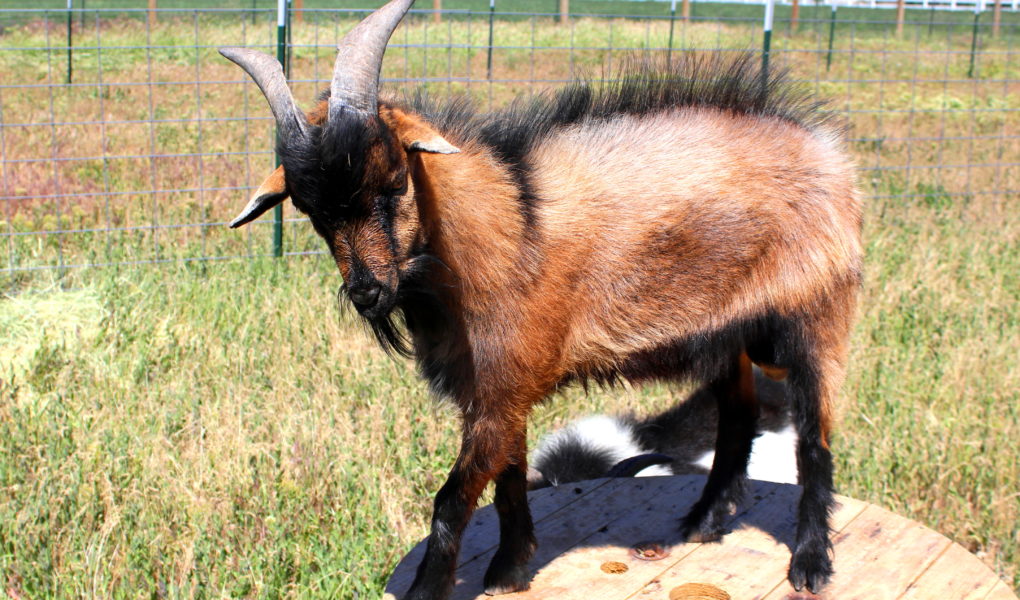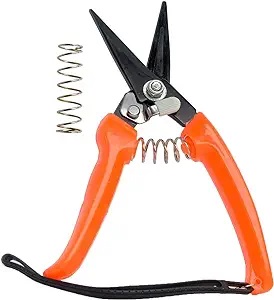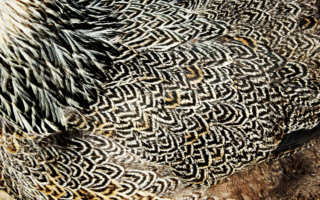For some, buying a goat with or without horns can be a difficult decision, but in most cases people choose to go hornless. Reasons vary from personal belief, family with kids, or if you plan on showing the goat . . .
Polled vs Dis-budded vs De-horned
A polled goat is one that was born naturally without horns. It’s a dominant gene meaning you must have a polled buck or doe in order to produce any offspring that are also polled.
Dis-budding is done with young kids, generally 2 weeks of age or younger, where a very hot iron is used to burn the little horn buds and stop them from turning into horns.
De-horned, unfortunately, is when a goat has already grown it’s horns, and the decision has been made to remove them and cut or band them off. It’s painful, and shouldn’t be done, especially as the horns are likely to come back as scurs. A better option over de-horning is tipping or just removing the sharp tip of the horn, and leaving a blunt end.
Ultimately, all of these options mean a goat with no horns.
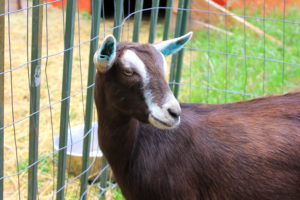
Pros & Cons
Goat With Horns
Pros
Goat doesn’t experience the pain of having horns burned off
Horns act as a natural temperature control for goats
Goat can defend itself from some dangers
Horns make natural back scratchers
Goats love to spar and head butt each other
Cons
A goat with horns can be a concern with young kids accidentally or intentionally getting poked
You can’t show a goat with horns
They can, in rare cases, harm each other
They can more easily damage and kill trees with their horns
Their horns can get stuck in certain types of fencing or feeders
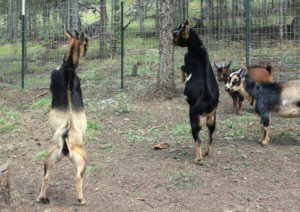
Goat Without Horns
Pros
Worry free choice for kids
Can take the goat to show
Don’t have to worry about goats beating each other up as much
They cause less damage to trees
Cons
Some have said the painful experience of dis-budding permanently changed their goats behavior
If done incorrectly, dis-budding can cause unsightly scurs or even brain damage
Goat loses it’s natural temperature control
Goat has no form of defense
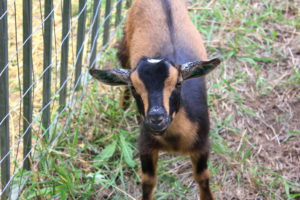
Personal Experience
I’ve owned both horned and non-honed goats and these are some of the conclusions I’ve come to . . .
Does: With my original does, I specifically sought out babies that had not yet been dis-budded and raised them as bottle babies. I did not have a single problem with all of them having horns, and in facts they loved to play and head butt each other. A couple years down the road, we wanted to add to the herd and I found a couple good lines that I wanted, but the kids were already dis-budded. We decided to go for it anyway and brought the new additions home. As expected, the pecking order had to be established and the poor newbies could not defend against the girls with horns. But after a few weeks, everybody figured it out and things settled down. In fact, one of the new girls, despite not having horns, actually became more dominant over a couple of my horned girls. Otherwise, I’ve only ever seen one injury from one goat tagging another goat in the side. But by the time I noticed it, the wound had already scabbed over and healed.
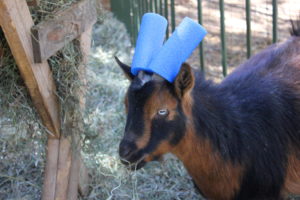
Helpful Tip:
If you are planning on adding hornless goats to a herd of goats with horns, just be sure to monitor them closely until everybody is used to each other and then they should be fine. If you have a large pasture, then it will likely not be an issue at all as there is room to duck and evade at that point. But if you have a smaller more enclosed area, maybe consider evening the playing field by cutting sections of foam pool noodles, and sticking them over the tips of your goats horns. That way if someone gets poked, it’s padded.
Bucks: If you want multiple bucks, it’s going to be best for everybody to choose one or the other (horns or no horns). This is especially true if you house your bucks near your females. Because come breeding season, if you have a goat with horns and one without, the one without horns is going to get the beating of a lifetime. But if they both have horns then they will have an equally fair advantage. I’ve owned two buck with horns, and when the does would go into heat, they’d battle and head butt each other until they got tired, but they never stabbed or harmed each other. On the flip side, I’ve had a goat with horns and then bought another one without horns. They both equally wanted to challenge each other, but the buck without horns got the rotten end of that deal and would get brutally stabbed in the sides (not literally, more like a very pointy punch). For that buck’s safety and before he got injured, I had to move him into his own separate area until the girls came out of their heat cycle. If you house your bucks far away from your does, then it may be possible to house horned and non-horned bucks together.
So Which One Is Better?
It comes down to personal preference. I see goats with no horns as more of a convenience and have very much enjoyed the hornless goats we’ve had. It’s especially nice not having to worry about a young child getting hit by the horns. However, I also think that if you’re not doing goat shows and have the choice, that’s it’s best to leave the horns on as nature intended. It takes a little more forethought and planning to make sure they aren’t going to get into trouble, but they also get to keep their natural thermostat and form of entertainment.

